Integrity of the circadian clock determines regularity of high-frequency and diurnal LFP rhythms within and between brain areas
Published in Neuroscience, General & Internal Medicine, and Anatomy & Physiology
Circadian Rhythms Adapt Organisms to 24-Hour Rhythms
Circadian rhythms modulate most body functions of many organisms. Their most obvious role is to coordinate the sleep-wake cycle as well as cell type-specific functions, such as the activity of individual neurons, according to the various demands that arise with the recurring changes of day and night over the course of 24 hours. Within each cell, rhythms are autonomously generated by a negative feedback loop of different transcription factors, oscillating in a 24-hour rhythm (endogenous clocks). Fundamental elements of this feedback loop in mammals are the two cryptochrome genes Cry1 andCry2 that we investigated in this study. On a systemic level, a structure in the hypothalamus, the suprachiasmatic nucleus (SCN), is the organism’s interface for light coming from the environment (environmental time cue) and the endogenous clocks of its individual cells.
Do Circadian Rhythms Govern Electrical Brain Activity?
It has been known that many brain regions are able to generate autonomous molecular circadian rhythms and that the electrical activity of individual neurons shows 24-hour oscillations. However, the extent to which this activity in the living animal is driven by endogenous rhythms, environmental time cues, or their interplay has remained an open question. Furthermore, it was unclear whether coordination of neuronal activity within and between individual brain regions might be influenced by circadian rhythms. We hypothesized that the presence of both endogenous clocks and environmental time cues is necessary to shape periodic 24-hour activity of neuronal populations. Beyond that, we suspected that the absence of rhythmicity destabilizes the coordination of neuronal signals within and between brain regions and also negatively influences non-circadian aspects of neuronal activity at minute, second, and millisecond time scales.
How to Examine the Influence of Circadian Rhythms on Electrical Brain Activity
To test our hypotheses, we recorded the activity of neuronal populations in freely moving mice using electrodes inserted into two brain regions, the SCN and the nucleus accumbens (NAc), over multiple consecutive days. We chose the SCN as the central pacemaker of the circadian system and the NAc as a region with autonomous rhythmicity. We examined the mere influence of endogenous clocks by comparing recordings of endogenously arrhythmic Cry1/2-/- mice with wild-type mice kept under constant darkness (DD), so without environmental time cues. To investigate the role of only environmental time cues, we also recorded neuronal populations of endogenously arrhythmic Cry1/2-/- mice under rhythmic 12:12 light-dark conditions (LD). Finally, we assessed the interaction of endogenous clocks and environmental time cues in wild-type mice kept under the same 12:12 light-dark regimen.
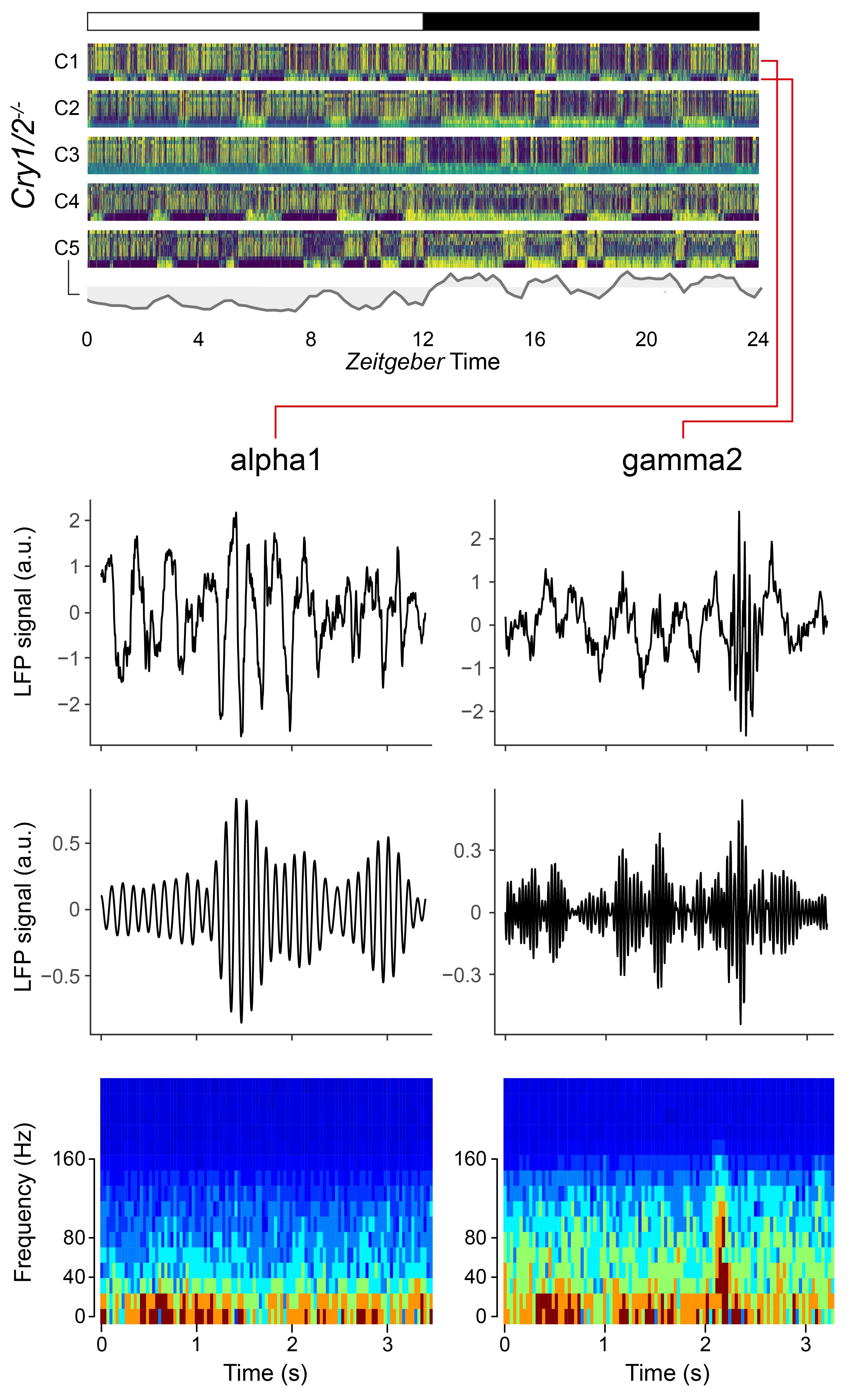
Circadian Rhythms Govern Electrical Brain Activity at Different Temporal Scales Within and Between Brain Regions
Our results are consistent with our hypotheses. Both daily rhythms of the environment, endogenous circadian clocks, and their interplay strongly influence day-dependent rhythmicity of electrical neuronal activity within both investigated brain regions. In Cry1/2-/- mice under DD, where both endogenous and environmental rhythms are absent, the activity of neuronal populations displays no 24-hour rhythmicity. When either endogenous clocks or environmental time cues are present, neuronal activity shows a moderate circadian distribution with comparably low amplitudes. Finally, in the presence of both endogenous and environmental rhythms, the recordings show a distinct diurnal distribution of neuronal activity, forming a well-defined 24-hour rhythm within both the SCN and the NAc.
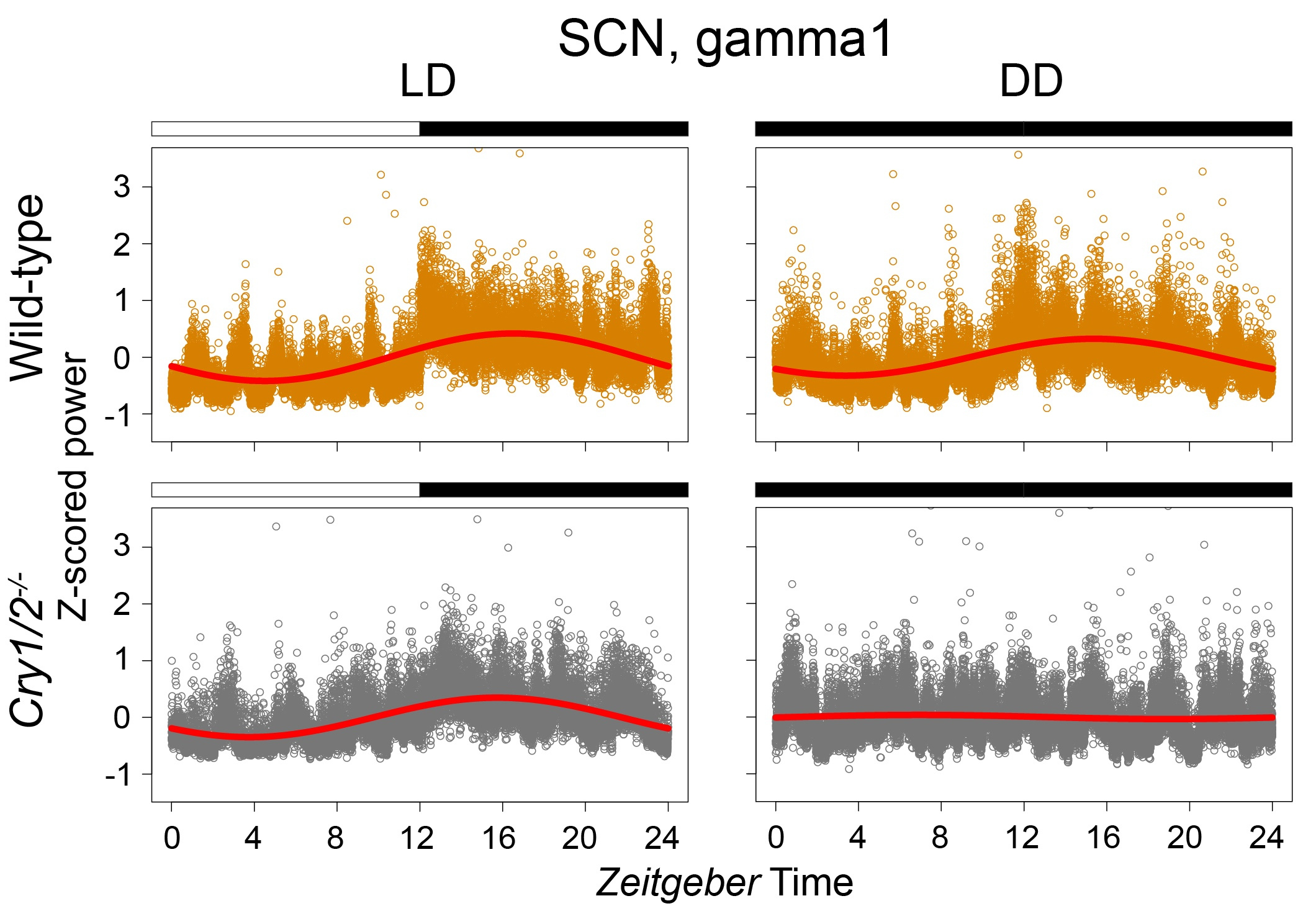
Beyond that, our results show that endogenous, environmental rhythms, and their combination also influence the interaction between SCN and NAc. In LD, relative amplitudes and frequency characteristics of neuronal activity of SCN and NAc are moderately synchronous at the second time scale in both genotypes. Under DD, however, synchronicity is relatively increased, an effect that is more dramatic in Cry1/2-/- animals. This result suggests that circadian rhythms impact the precise choreography of activity in the SCN and subordinate brain regions. Interestingly, this means that synchronicity is overall lowest under physiological conditions in wild-type animals under LD.
Remarkably, the presence of environmental time cues and endogenous clocks also determines the nature and quality of neuronal activity on time scales much shorter than 24 hours. In wild-type animals under LD conditions, our recordings show smooth and steady signals at the minute, second, and millisecond time scale. In absence of endogenous and environmental rhythms, however, neuronal activity is more variable and less steady. Whereas in wild-type mice directly successive activity bouts are rather similar, resulting in a smooth progression of the signal, the differences from one measuring point to the next in Cry1/2-/- mice are more drastic, leading to a signal with lower regularity. Additionally, in Cry1/2-/- mice neuronal activity is excessively synchronous at the millisecond time scale while normally electrical activity of many neurons is rather non-synchronous. Interestingly, at the level of animal populations, wild-type animals show higher similarity in the dynamics of their neuronal activity among each other than Cry1/2-/- animals.
Taking these results together, our study shows that the interplay of daily rhythms of the environment and functional endogenous circadian rhythms is integral for both circadian and non-circadian coordination of neuronal ensemble dynamics. Interestingly, this involves not only the temporal coordination of neuronal activity over the time span of a day, but also the range of hours, minutes, seconds, and milliseconds. We also show that circadian rhythms influence properties of neuronal functions within a brain region, between brain regions, and even between individual animals in a group.
Clinical Relevance of Circadian Rhythmicity
Recent studies have shown that Cry1/2-/- animals display an anxiety-like phenotype, restlessness, and characteristics of compulsive behavior. It is also known that in humans both disruptions of endogenous clocks (such as alterations in clock genes) and environmental time cues (such as under shift work) can significantly increase the probability of developing mental disorders. In our study, we show for the first time the impact of disruptions of circadian rhythms on elementary functions of the brain, including coordination of neuronal activity on different temporal scales, but also the spatial interplay between brain regions. However, our result that environmental time cues have a comparably large influence as endogenous clocks alone, and that their interaction represents the optimal state, demonstrate that chronotherapies based on the stabilization of environmental rhythms have very concrete and clearly measurable effects on the functionality of the brain and should therefore always be considered as accompanying therapeutic measures in the clinical practice.
Follow the Topic
-
Molecular Psychiatry

This journal publishes work aimed at elucidating biological mechanisms underlying psychiatric disorders and their treatment, with emphasis on studies at the interface of pre-clinical and clinical research.
Your space to connect: The Psychedelics Hub
A new Communities’ space to connect, collaborate, and explore research on Psychotherapy, Clinical Psychology, and Neuroscience!
Continue reading announcement
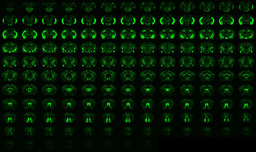
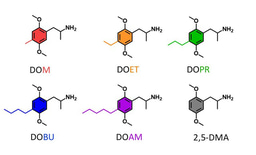
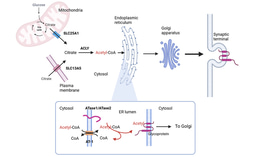
Please sign in or register for FREE
If you are a registered user on Research Communities by Springer Nature, please sign in